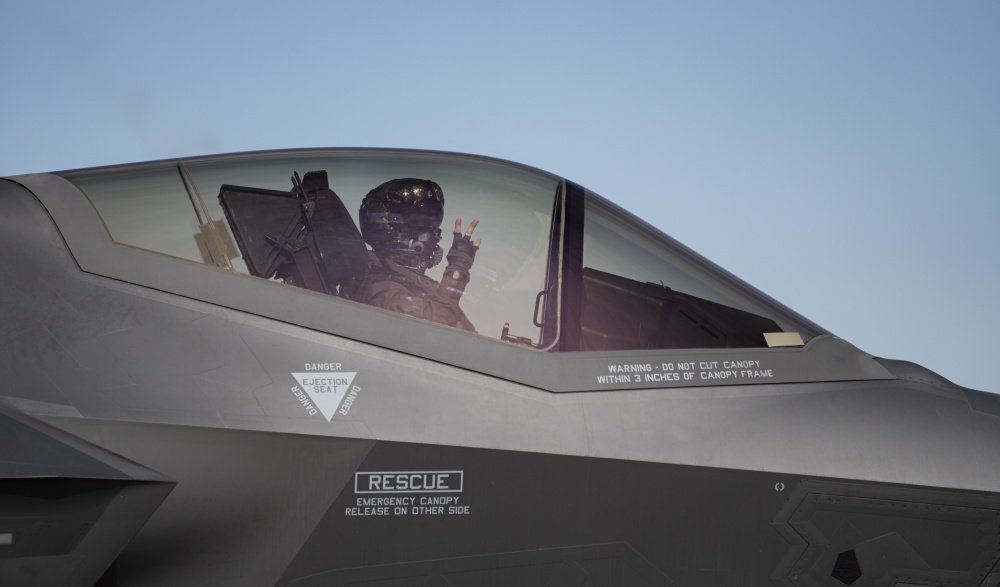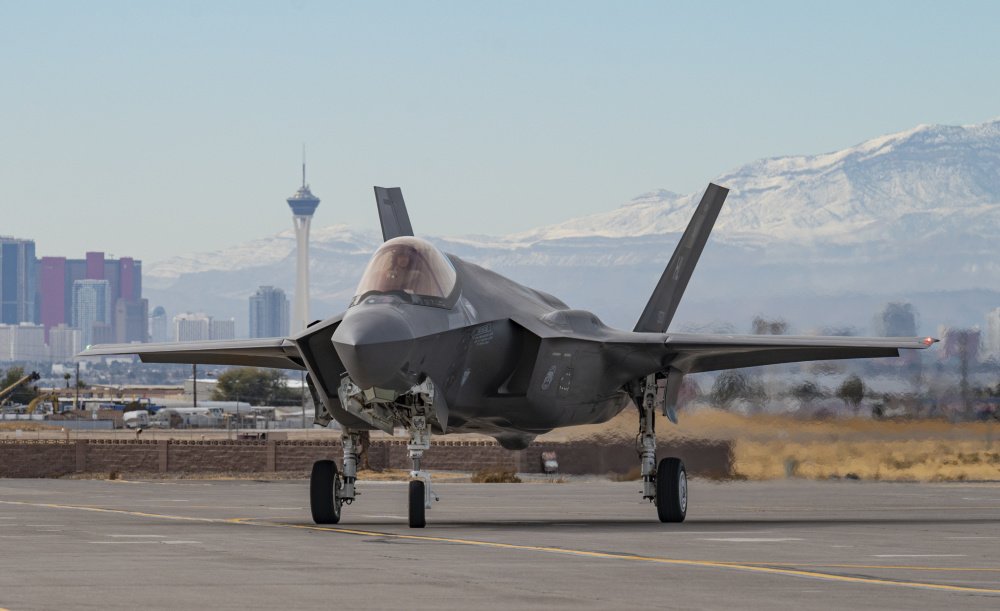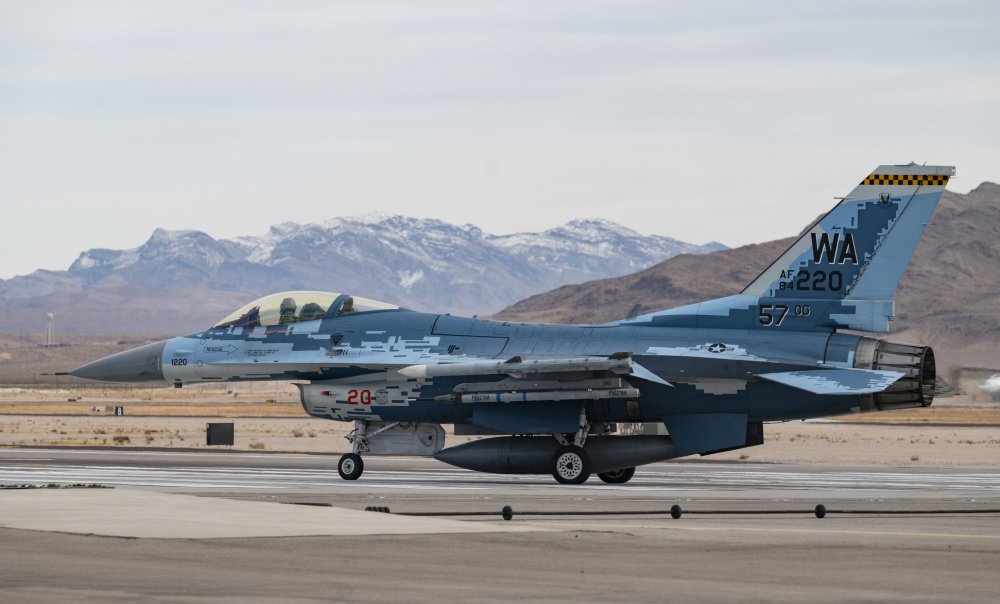Call Sign ‘Vader-1’ — US Space Aggressors Prepare American Combat Pilots for a New Era of Extraterrestrial Warfare

A US Air Force pilot assigned to the 421st Fighter Squadron, Hill Air Force Base, Utah, poses for a photo inside an F-35A Lightning II fighter jet during Red Flag 20-1 at Nellis AFB, Nevada, Feb. 5, 2020. US Air Force photo by Airman 1st Class Dwane R. Young.
Several times each year America’s premier combat pilots converge on Nellis Air Force Base in Nevada for an air war exercise called Red Flag.
The storied proving ground for Air Force fighter pilots, Red Flag has become a bellwether for the war of the future, underscoring how fighter jocks and the supersonic whips they command are now only one piece of a complicated web of interwoven combat domains — including novel, non-kinetic threats in cyberspace and outer space.
As participants in Red Flag 21-1, members of the 26th Space Aggressor Squadron — an Air Force Reserve unit — simulate how America’s modern adversaries might use space-borne weapons to degrade the air superiority advantage that US combat forces have long enjoyed.
“Our role in [Red Flag] 21-1 is to replicate how an adversary would act in a conflict using space enabled capabilities,” said Maj. Scott Hollister, a flight commander in the 26th Space Aggressor Squadron — call sign Vader-1.

Activated in 2000, the 527th Space Aggressor Squadron was the US military’s first space aggressor unit. The 26th Space Aggressor Squadron, for its part, stood up in 2003. Space aggressors generally focus on three types of space-borne threats — GPS electronic attacks, satellite communications electronic attacks, and anti-satellite attacks.
“We and our active duty counterparts, the 527th Space Aggressor Squadron, are the only units who bring a space oriented ‘bad guy’ perspective to the exercise,” Hollister said, regarding Red Flag.
Located just outside of Las Vegas, Nellis Air Force Base is known as the “Home of the Fighter Pilot.”
Typically running multiple times per year, Red Flag is the Air Force’s premier air combat exercise, involving air, ground, cyber, and space threats. Running from Jan. 25 to Feb. 1, this year’s first iteration of the exercise includes some 2,400 participants from three countries, operating a gamut of the world’s most advanced combat aircraft, including the F-22 Raptor, F-35 Lighting II, F-16 Fighting Falcon, EA-18G Growler, F-15E Strike Eagle, and A-10 Thunderbolt II “Warthog.”
During Red Flag, pilots and other personnel are pitted in mock combat against elite American “aggressor” units whose sole purpose is to simulate the combat tactics, technology, and procedures of foreign adversaries’ military forces.
The Air Force’s two active aggressor fighter squadrons fly F-16 fighters painted in unusual camouflage schemes and colors not normally found on American warplanes. The pilots in these elite aviation units compete against their peers in simulated dogfights and other air combat scenarios. Reportedly, there are plans to integrate early-model F-35As into the aggressor fleet by mid-2021.

As the Pentagon buckles down for great power competition after a generational focus on combatting low-tech insurgencies, the Air Force has put a renewed emphasis on its aggressor units. To that end, Red Flag offers American forces a chance to operate in a contested, degraded environment, facing threats from the air, ground, space, and cyberspace.
“Any realistic training against a near-peer or competitor nation is going to require heavy utilization of multi-domain operations. The classical role of the Air Force being able to penetrate an airspace protected by an Integrated Air Defense System is no longer a problem set that can be solved using Air Force assets and capabilities alone,” US Space Force Capt. Kaylee Taylor, chief of non-kinetic integration at the 414th Combat Training Squadron, said in a release.
During Red Flag, the space aggressors simulate an adversary’s tactics by jamming satellite communications and GPS receivers. This training teaches American warfighters how potent these “non-kinetic” weapons can be.
In military parlance, “non-kinetics” generally refers to electronic warfare weapons — deployed from the ground, air, and space — which can be used in tandem with cyberattacks. At Red Flag, the space aggressors work closely with a cyber aggressor unit to mimic the combined non-kinetic threats that US forces would likely face against a modern adversary such as Russia or China.
According to an Air Force release: “The 26th [Space Aggressor Squadron] mission is to replicate enemy threats to space-based and space-enabled systems during tests and training exercises. By using Global Positioning System and satellite communications adversary effects, the squadron provides Air Force, joint and coalition military personnel with an understanding of how to recognize, mitigate, counter and defeat these threats.”

Proficiency in operating with degraded systems could be decisive in a modern war. Adversaries such as Russia and China have electronic warfare technology capable of interfering with GPS signals and communication feeds — effectively divorcing US pilots from the technological aids on which they’ve relied to prosecute the post-9/11 air wars over Afghanistan, Iraq, and Syria.
In short — US combat pilots are training to fight a far more technologically sophisticated adversary than they’ve faced since 2001. And they’re training to do so without relying on America’s vaunted technological dominance in air power.
For fighter pilots, that means a renewed emphasis on certain old-school tactics, such as executing airstrikes with unguided, free-fall “dumb bombs” that depend on a pilot’s touch to ballistically lob onto a target. They also need exposure to the full gamut of electronic warfare threats they may face in combat against a near-peer adversary.
“For the pilots, it may be their first time seeing non-kinetics, space or cyber integrated into the air fight. We introduce it to them so they can prepare to compete and win in all-domain combat operations,” Taylor, the Space Force captain, said of Red Flag 21-1.
Two decades of counterinsurgency operations have adapted American combat pilots to operate within fairly predictable war zone architectures. But in the next war, US forces will face much more confusing battlefields where nothing can be taken for granted — especially communication and GPS.
“Red Flag aims to train how we fight against modern potential adversary capabilities. In order to do this, we have to bring together airborne capabilities with the emerging capabilities of both space and cyber units,” Taylor said.
Read Next: A Modern-Day Stalingrad: Remembering Ukraine’s ‘Cyborg’ Warriors and the Donetsk Airport Battle

BRCC and Bad Moon Print Press team up for an exclusive, limited-edition T-shirt design!
BRCC partners with Team Room Design for an exclusive T-shirt release!
Thirty Seconds Out has partnered with BRCC for an exclusive shirt design invoking the God of Winter.
Lucas O'Hara of Grizzly Forge has teamed up with BRCC for a badass, exclusive Shirt Club T-shirt design featuring his most popular knife and tiomahawk.
Coffee or Die sits down with one of the graphic designers behind Black Rifle Coffee's signature look and vibe.
Biden will award the Medal of Honor to a Vietnam War Army helicopter pilot who risked his life to save a reconnaissance team from almost certain death.
Ever wonder how much Jack Mandaville would f*ck sh*t up if he went back in time? The American Revolution didn't even see him coming.
A nearly 200-year-old West Point time capsule that at first appeared to yield little more than dust contains hidden treasure, the US Military Academy said.












